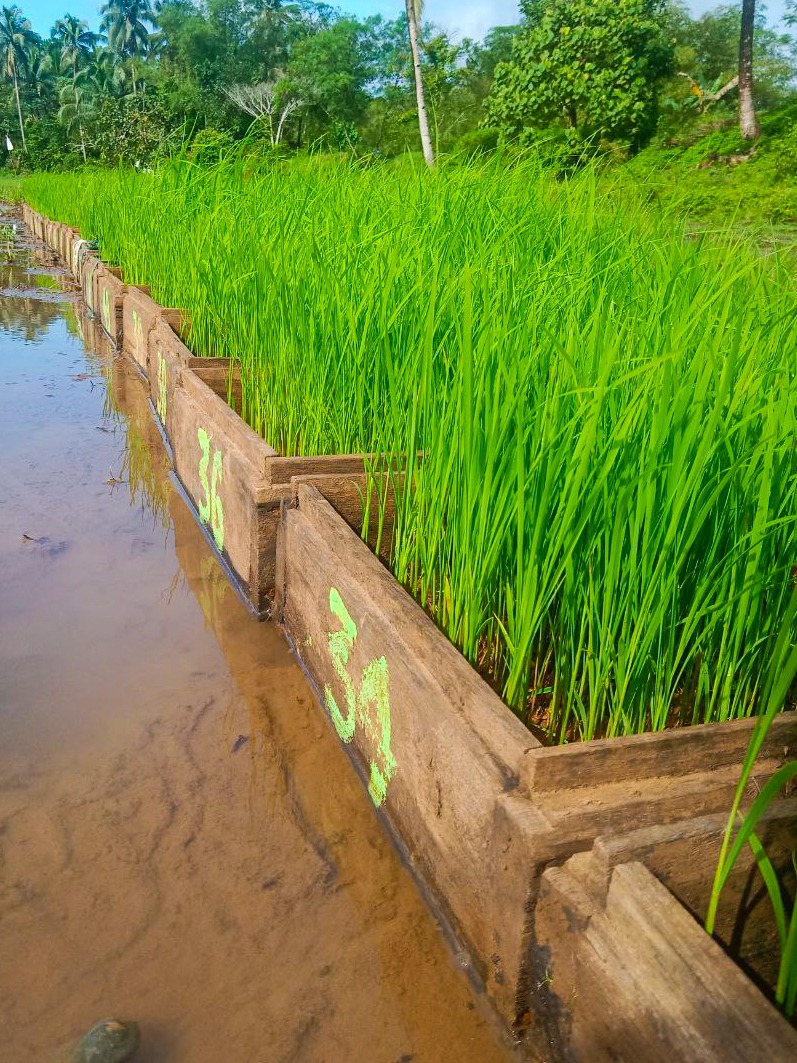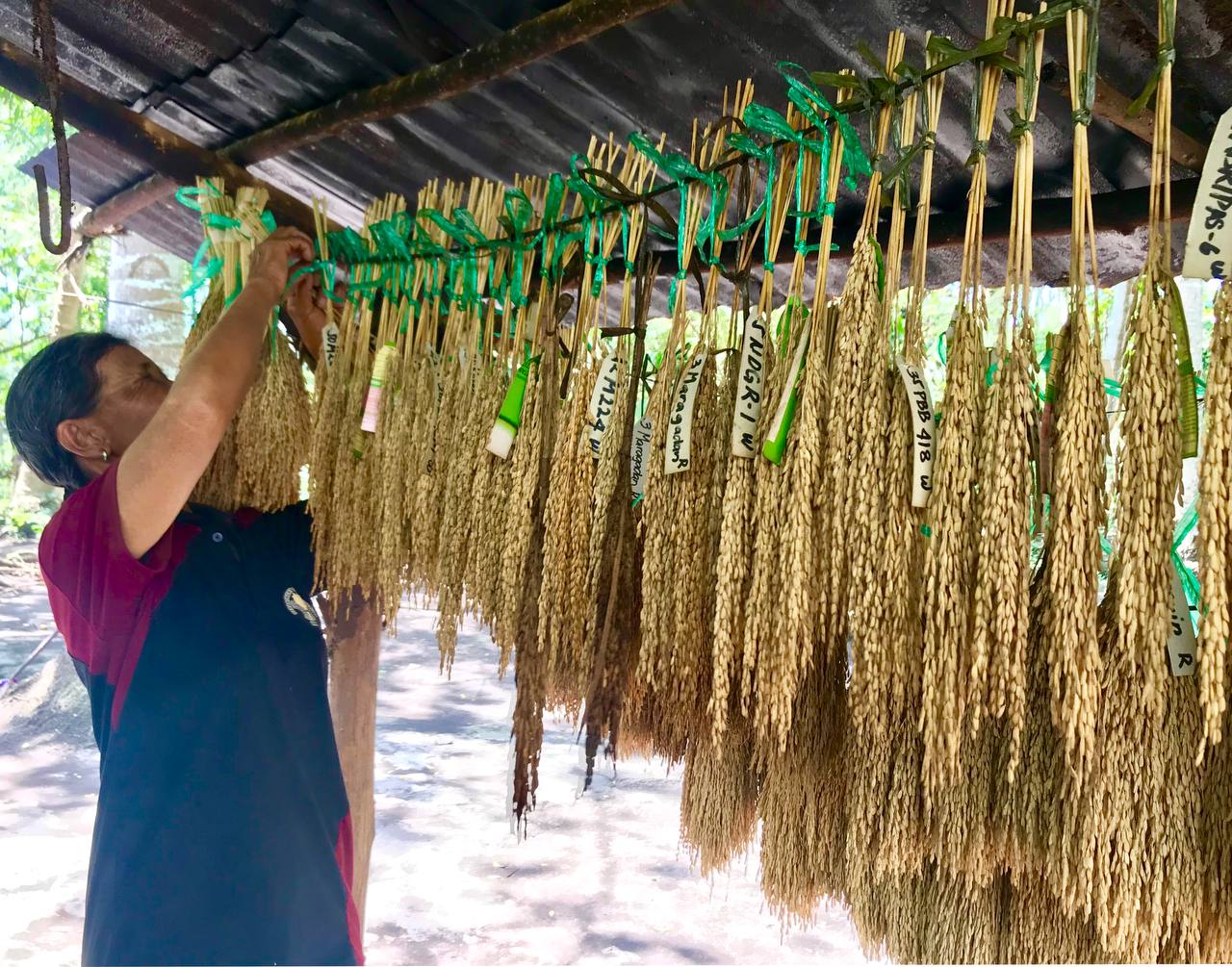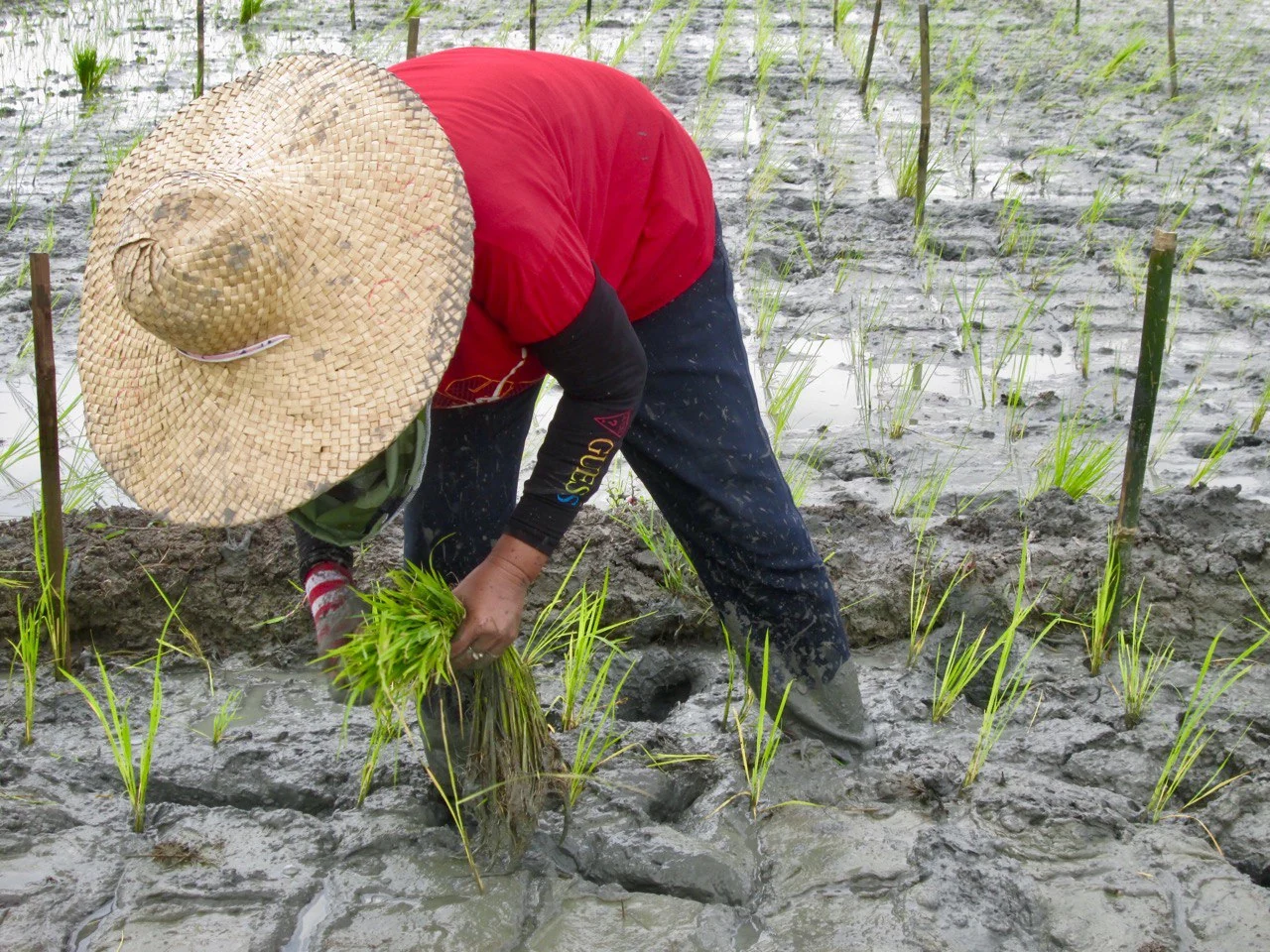Rice, the food that feeds the Philippines, is in climate change’s crosshairs. Sea-level rise, hotter temperatures and extreme weather are putting one of the country’s top crops at risk, as drought, floods and encroaching saltwater threaten rice paddies and the livelihoods of those who tend them.
In a bid to future-proof this agricultural staple, one effort is borrowing from farming’s past.
A farmer-led network and collaboration with scientists and others called MASIPAG (Magsasaka at Siyentipiko para sa Pag-unlad ng Agrikultura) has bred dozens of native rice plants, over several decades, to be more resistant to drought, saltwater, pests and diseases. MASIPAG then trained many of the 30,000 farmers in its network how to grow these more resilient varieties using organic cultivation methods.

The idea was to help them “relearn the Indigenous and local production processes which were almost erased by the Green Revolution,” says Kathryn Manga, international solidarity officer and project coordinator at the Asian People’s Exchange for Food Sovereignty and Agroecology, an umbrella organization for groups including MASIPAG. The Green Revolution, which spread across the developing world in the 20th century, replaced ancient farming techniques with modern ones like genetic engineering and pesticides — practices that in some cases reduced hunger, but also disrupted ecosystems and left many poor farmers behind. MASIPAG’s effort to return to the old ways — this time with more resilient plants — worked. “It was the local [rice] varieties which were left standing after the strong winds and rains of the typhoons in 2022,” Manga says.
It’s just one instance of a growing global movement to use agroecology principles to improve farming practices, enhance farmers’ living standards, and increasingly, adapt agriculture to the planet’s changing climate. Agroecology — farming with nature — is similar to regenerative agriculture, which focuses on soil health. But its 13 principles go further by eschewing the use of synthetic fertilizers and pesticides, and by including social and political values that embrace land rights, open access to seeds, fair and humane working conditions, and sustainable livelihoods. Research, along with real-world examples like MASIPAG’s, shows that agroecology holds promise for strengthening farming communities and conserving nature.
While it faces policy headwinds and barriers to entry, agroecology has “a huge role to play” in both mitigating climate change and promoting climate justice, says Ernesto Mendez, professor of agroecology and environmental studies at the University of Vermont and head of the university’s new Agroecology Institute. “We have these methods that can support practices for mitigation and adaptation, but we also want to incorporate and have experience bringing in equity and justice issues.”
Justice in the Philippines means “genuine agrarian reform with free land distribution,” says Manga, lamenting that Filipino farmers are killed for exercising their rights to land. “Only by giving them full control of such resources can they … serve the country in its fight against the climate crisis,” she added.
In other words, Manga would like to see the landless poor who work on large plantations, often in unjust conditions, farm their own land using agroecology principles, which she believes is the best response to climate change. The Philippines passed an agrarian reform law in 1988 but has dragged its feet on enforcement.

The free exchange of seeds between farmers is also essential to justice, says Lucil Ortiz, unit coordinator of the research, education and training unit of the MASIPAG National Secretariat. Discussions are underway to change Filipino seed law to prohibit farmers from breeding and sharing seeds, including through MASIPAG’s participatory rice breeding program, she said. But forcing poor farmers to buy the more limited seed varieties from agribusinesses keeps them in debt, and it doesn’t help them build climate resilience. Farmers are better equipped to identify and breed varieties that thrive in their regions than transnational seed companies, says Ortiz.
Similarly, in Kenya, the Seed Savers Network promotes the exchange of seeds from native crop and tree varieties, which are more resilient to climate change impacts. Tree crops like passion fruit add biodiversity to farms while increasing farmers’ food security.
Agroecology’s ecological practices focus on restoring and conserving organic matter in soils. They employ crop and pasture rotation techniques, organic fertilizers like manure and compost, combining trees with farming, and using crop varieties that are adapted to the climate.
Studies show that, in comparison to the intensive production, chemical inputs and monocropping that define conventional agriculture, agroecological practices can sequester more carbon in soil, use less water, reduce dependence on synthetic fertilizers and pesticides, and promote biodiversity, while generating higher farmer incomes and greater food security. Research also documents that farming communities practicing agroecology recover faster from extreme weather events, in part because they are organized. Farmers in these communities are well-connected to resources and networks, and they help each other out.

A study of the organically grown MASIPAG rice varieties found those farms to be more resilient to climate change than conventional rice farms. The researchers assessed 54 components of farming systems, including household, production, environmental, social and economic dimensions. Not surprisingly, the organic systems scored higher because of their focus on ecological practices that improve soil health, water quality and farm biodiversity. Heterogenous landscapes with trees, mixed crops and healthier soils demonstrate better buffering during extreme events. But the organic systems also scored higher on social indicators of climate resiliency, such as the capacity for building human capital, which is measured by household health, knowledge of land improvement strategies, access to infrastructure, active participation in groups, household equality and investment in human capital, such as education.
At the meta-level, a recent review of 80 agroecology studies assessed its ability to tackle climate change and found “strong evidence … that agroecological approaches can achieve high productivity and profitability without the environmental externalities of conventional agriculture.”
The wide adoption of agroecology isn’t stymied so much by the method’s challenges as by government policy and private investment practices, which often skew towards industrial agriculture and biotech fixes, according to Daniel Moss, co-director at the Agroecology Fund, which provides grants to agroecology movements worldwide. Still, Moss sees signs of progress, citing the Agroecology Coalition which brings together philanthropists, governments, private investors, and multilateral and bilateral donor agencies to support a global transition to agroecology-based food systems. The coalition works with governments developing and implementing agroecology transition plans to share knowledge and seek finance. Coalition members share a common database to track investments and ensure funded projects pair climate-beneficial farming practices with social equity, such as through social enterprise.
Countries like India, Senegal, and Brazil are advancing policies to enable agroecology, according to Moss. Brazil passed a national policy for agroecology in 2012. The Jair Bolsanaro administration reversed or weakened many of its provisions, and the country is still playing catch up, says Angela Cordeiro, co-director of the Agroecology Fund and a Brazil-based agronomist. But a hallmark of Brazil’s policy is a requirement that at least 30 percent of the food sourced for the mandatory school feeding program that serves 40 million kids come from family farms, and “farmers practicing agroecology receive a higher price for the product,” said Cordiero. That policy alone invests hundreds of millions of dollars into agroecology.
In the US, agroecology is practiced in pockets of Vermont, California, and other states, but policies don’t favor it, said Mendez. The U.S. Department of Agriculture is, however, doing “interesting work that aligns with agroecology around climate and equity, including support for BIPOC farmers which tend to have smaller diversified farms,” he noted.
Participatory research between academic institutions and farmers, social equality, and a return to indigenous practices are key features of agroecology in the US. For instance, the Local Hampton-Frank Pinder Center for Agroecology focuses on helping southern Black farm communities, historically locked out of financial and technical agricultural support, respond to climate disruption and social inequality by teaching them agroecology practices, building “resiliency networks” and fostering cooperative models of economic organization. The Traditional Native American Farmers Association meanwhile works to revitalize traditional indigenous agriculture such as by providing workshops in seed saving, health and wellness, sustainable farming practices and traditional food production.
But to advance agroecology in the US, farm policies need to change, subsidies need to be redirected and academic institutions need to give it more focus, says Mendez, and that won’t be easy with industry pushback.
“The industry tries to say that ‘all your ideas are romantic and won’t work’ and that we need their technology to feed millions of people that are hungry,” said Helda Morales, senior researcher at El Colegio de la Frontera Sur in Mexico. But Morales flips that around, noting that the current system is already failing, with 783 million people facing chronic hunger worldwide. She points to research that shows that scaling agroecology at the country or regional level can produce enough food to feed people, with the caveat that diets must become more plant based.
Maybe it’s time for adaptive learning, suggests Moss, noting, “This whole industrial agriculture system with its heavy subsidization is only 150 years old, and gosh that’s just a blip” in the history of farming. “With all the evidence that agroecology improves nutrition, landscapes and farmers’ incomes, can we make course corrections?”
For Manga the course is clear. “Local knowledge together with scientific learnings have proven to be the answer to the climate crisis in the countryside,” she said. “Those on the frontlines have the solution. It is up to their governments to listen to them and support them in their endeavors.”




